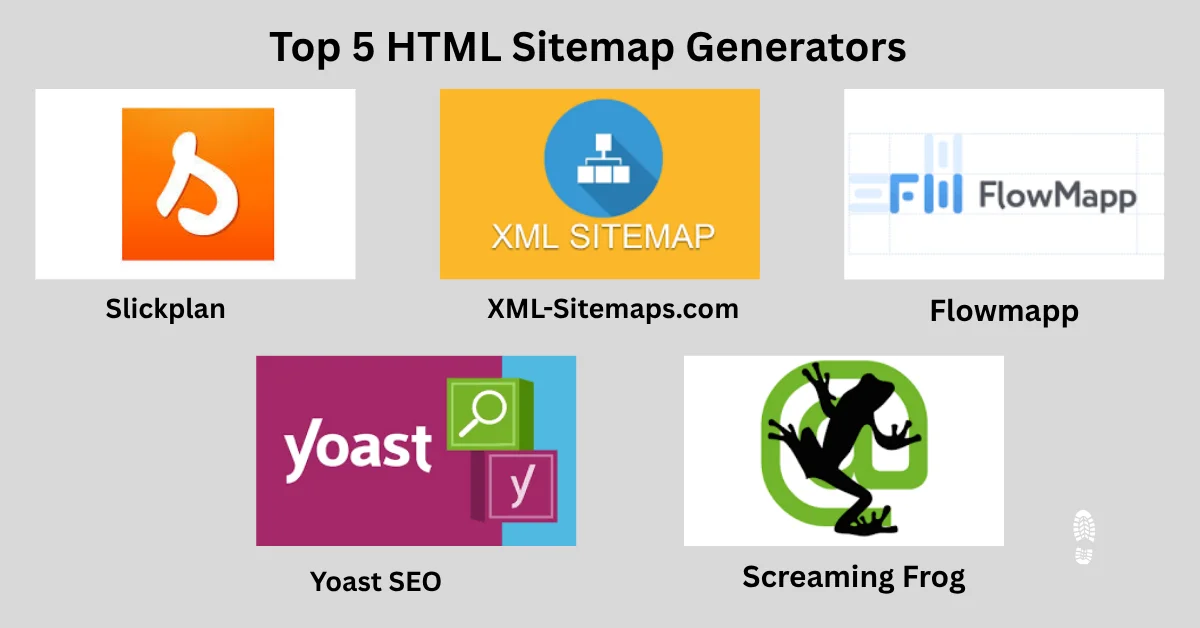Creating an HTML sitemap manually can take a lot of time, especially if your site has many pages. That’s where sitemap generators come in. These tools automatically build a sitemap for you, saving time and reducing the chance of human error.
1. Slickplan
Slickplan is a popular tool used by website owners, developers, and designers to create sitemaps with ease. It offers both HTML and visual sitemaps, which makes it perfect for planning and organizing websites.
Why choose Slickplan:
- User-friendly interface: You don’t need to be a tech expert to use it.
- Drag-and-drop builder: You can move pages around and see how your site structure looks visually.
- Team collaboration: Great for web design teams who need to work on the sitemap together.
- Export options: You can export your sitemap in multiple formats, including HTML, XML, PDF, and text.
Slickplan is a paid tool, but they do offer a free trial, so you can try it before you buy it. It’s perfect if you want a visually clean and professional sitemap with flexibility in format.
2. XML-Sitemaps.com
Although the name says “XML,” this tool also lets you generate HTML sitemaps with just a few clicks. It’s one of the oldest and most trusted sitemap generators online.
Key features:
- Free and easy to use: No need to sign up or download anything.
- Works for small to medium websites: Free version covers up to 500 pages.
- Multiple output options: Generate XML, HTML, Text, and Google-compatible sitemaps.
- Simple layout: Great for quick and easy sitemap creation.
If you’re running a small website or a blog and just want a basic sitemap quickly, XML-Sitemaps.com is a reliable choice. It’s great for people who are new to sitemaps and need something straightforward.
3. Flowmapp
Flowmapp is a modern tool built for planning user experiences (UX) and website structure. It is especially good for teams who want to design how their website will look and feel.
Features you’ll like:
- UX-focused sitemap builder: Helps map out the journey a visitor will take on your website.
- Attractive visuals: Makes it easy to explain the site structure to clients or team members.
- Collaboration tools: You can share your sitemap and get feedback in real time.
- HTML export: Once done, you can easily export your sitemap as HTML for your website.
Though not free, Flowmapp is a strong option for creative teams and agencies that want more than just a basic sitemap. It’s perfect for client-facing work where presentation matters.
4. Screaming Frog SEO Spider
This tool is more technical and mainly used by SEO professionals, but it can also generate HTML sitemaps. Screaming Frog crawls your website just like Google does and shows you every page, link, and image on your site.
Why use Screaming Frog:
- Crawls deeply: Finds every single page, including hidden or unlinked ones.
- Custom HTML sitemap generation: You can create a sitemap based on your crawl results.
- SEO analysis: Shows issues like broken links, missing meta tags, and duplicate content.
- Great for big websites: Handles thousands of pages efficiently.
It’s free for up to 500 pages, but you’ll need the paid version for larger sites or advanced features. This is a great tool for people who care about technical SEO and want full control.
5. Yoast SEO (for WordPress)
If your site is built on WordPress, the Yoast SEO plugin is probably one of the easiest ways to create sitemaps, including HTML sitemaps. Yoast is mainly used for SEO, but it also includes sitemap features.
What Yoast offers:
- Automatic sitemap creation: Just turn the feature on, and it does the rest.
- User-friendly: You don’t need to do any coding or uploading.
- Built-in HTML and XML sitemaps: Makes it easy for both users and search engines.
- Integration with WordPress: Since it’s a plugin, you don’t need to go anywhere else.
While Yoast is mainly focused on improving SEO, its built-in sitemap tool makes it a solid all-in-one solution for WordPress users who want convenience and automation.
Why Use an HTML Sitemap?
You might be wondering if an HTML sitemap is really necessary when you already have menus and categories on your website. The answer is yes, and here’s why:
- Better user experience: It’s like a table of contents for your site.
- Easier navigation: Visitors can quickly find the page they’re looking for.
- SEO boost: Helps search engines find all your pages, especially ones with fewer internal links.
- Error discovery: You may find broken or hidden pages while generating the sitemap.
- Organization: Helps you understand how your site is structured and if anything is missing.
What to Look For in a Sitemap Generator?
Choosing the right HTML sitemap generator depends on your needs. Here are a few things to consider before picking one:
- Ease of use: If you’re not very technical, pick one with a user-friendly interface.
- Export formats: Make sure it supports HTML output.
- Website size: Some tools are better for small websites, others for large ones.
- Collaboration: If you’re working with a team, tools like Flowmapp or Slickplan may be ideal.
- Extra SEO tools: Some sitemap generators also offer keyword analysis or broken link detection.
Conclusion
Creating an HTML sitemap doesn’t have to be complicated. With tools like Slickplan, XML-Sitemaps.com, Flowmapp, Screaming Frog, and Yoast SEO, you can easily build a clear and helpful sitemap that improves both user experience and SEO. Whether you have a small blog or a large business website, there’s a sitemap generator out there that fits your needs.
Remember, a good sitemap is more than just a list of links it’s a map of your content, a guide for your visitors, and a helping hand for search engines. So take the time to choose the right tool, and keep your site organized and easy to explore.
Also Read: Free Blogger Sitemap Generator: Create XML Sitemaps Easy





